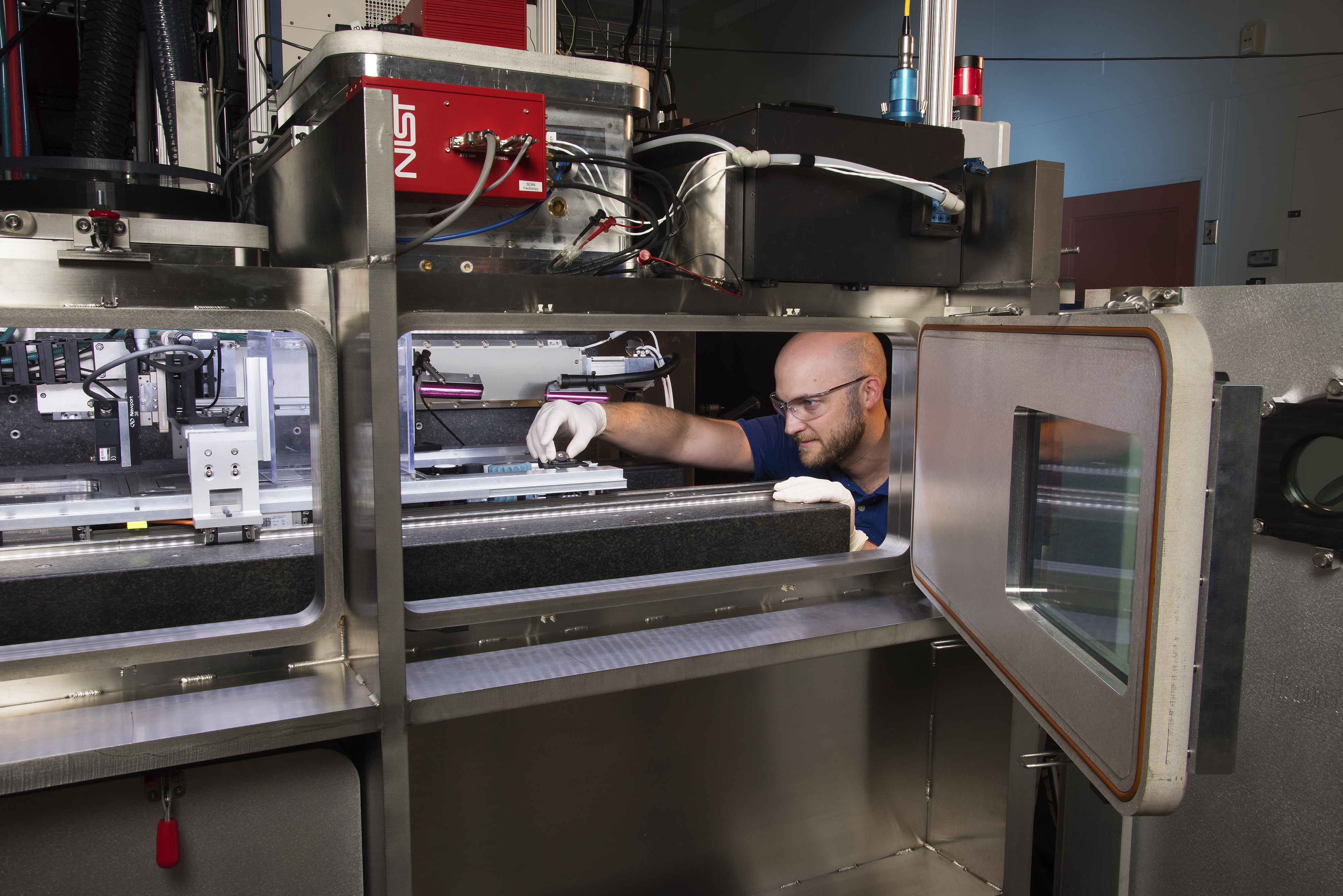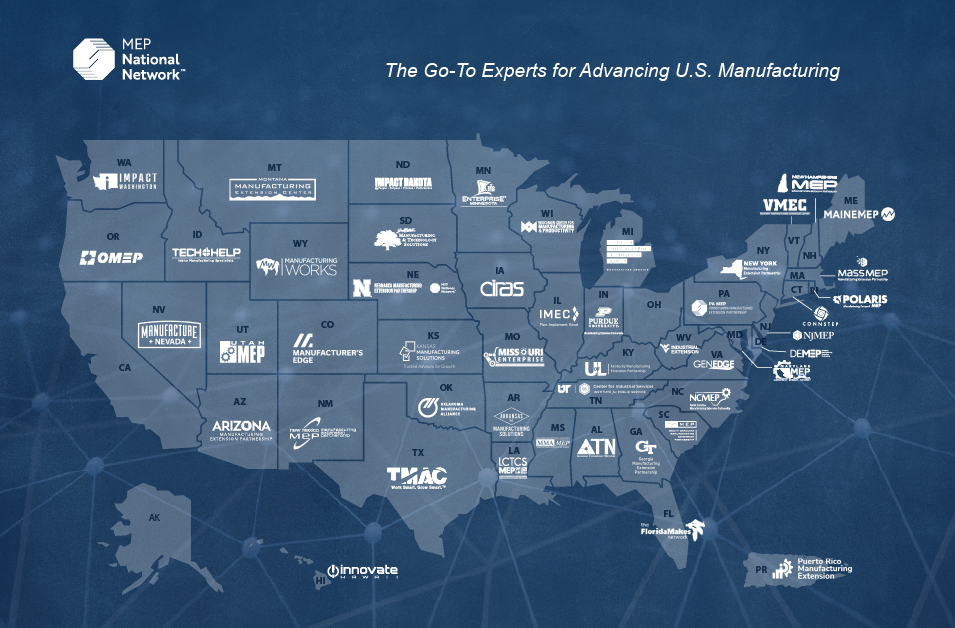Taking Measure
Just a Standard Blog
Technology That Will Change Our World in 2023 and Beyond: Manufacturing Innovation

As we begin 2023, Pravina Raghavan, the director of NIST’s Manufacturing Extension Partnership, looks ahead to the most transformative technology taking hold for the coming year and beyond in the world of manufacturing. From making organs for people who need transplants to managing supply chains, she sees exciting technological advancements in store in the manufacturing world.
Low-Cost Sensors Will Help Predict When Machines Need Maintenance
Imagine how much easier life would be if you could always predict when your computer would crash or your home’s pipes would leak.
That’s the general idea behind a framework called Prognostics and Health Management (PHM), which manufacturers are increasingly applying to their operations. By evaluating how reliable a system is, companies can use preventative maintenance to keep their systems running safely and efficiently.
In 2023 and beyond, the sensors that allow this type of proactive systems maintenance will become less expensive and more readily available. This is happening mainly because of the recent increase in availability of two things necessary for this technology to advance — optical equipment that can detect tiny details that may show a problem in a system and more affordable computational capabilities. Both factors are driving down the computing costs and the physical costs of the sensors and other components required for this type of maintenance.
PHM will be especially effective in international chemical and refinery companies, where pennies or fractions of a penny can have a significant impact on a company’s bottom line.
Additive Manufacturing Has World-Changing Potential
You’ve probably heard of 3D printing, but 3D printing is just one type of additive manufacturing. Additive manufacturing allows the production of complex shapes and geometries that cannot be built with other techniques. It can be used with a variety of materials, including polymers, cement and metals.
One of the most exciting possibilities is the 3D printing of biological organs, though this is still in development. This offers tremendous potential for saving lives with replacement organs made from cellular material.
Advances in digital manufacturing techniques are changing how and where physical goods can be made, making on-demand and hyper-customized products a reality. For example, 3D printers can now print a much wider variety of objects, and the number of viable filament materials (plastic materials used in a 3D printer to make a 3D model according to specs) is growing, too.
Additively manufactured housing can be built at a fraction of the cost of traditional buildings. In business settings, manufacturers can keep legacy equipment operational by printing new parts, saving organizations the cost of replacing equipment. This type of manufacturing can also be more sustainable for the planet.

The Industrial Internet of Things Will Promote Connectivity and Supply Chain Visibility
In an increasingly connected world, smart manufacturing, or using both digital and physical resources to optimize the manufacturing process, allows for connectivity among devices. Smart manufacturing is nimble, reacting quickly to changes in demand. It’s also adaptable and resilient to disruption.
The advantages of smart manufacturing include streamlining and improving the production process and enhanced visibility into sourcing and supply chains. While there are some vulnerabilities with this technology currently, including cyber threats and other concerns, addressing those issues could lead to significant breakthroughs in this area of manufacturing technology.
Smart manufacturing can allow a digital thread to be run through an entire supply chain to ensure ethical sourcing within products. So if you wanted to be sure a product you bought was entirely sourced through ethical production (with worker safety, the health of the planet, and other similar considerations in mind), you would be able to trace each step of the supply chain.
Some companies are already seeing the promise of Internet of Things technology in their operations. Pelco, an Oklahoma hardware manufacturer that works with NIST’s Manufacturing Extension Partnership (MEP), uses a computerized model to test the movement of equipment, materials and people in the factory. This model allows managers to test different production scenarios without having to move actual pieces of equipment or combine tasks. The company even tests new technologies without having equipment on-site, testing for safety and efficiency before equipment is rolled out on the factory floor. This saves the company money and promotes a safer environment for its workers.

Talent and Technology Are Vital to Manufacturing Success
Advanced manufacturing technologies can improve manufacturing capability and efficiency. These technologies help small and midsize manufacturers improve their operations — by optimizing processes, improving quality and increasing the effectiveness of their equipment.
Manufacturers face challenges attracting talent to replace retiring workers. Strengthening and optimizing every aspect of talent management is a critical challenge for the manufacturing industry. NIST’s MEP offers an extensive range of workforce services to address every stage of the employee lifecycle, including assessment, planning, recruitment, and training and development of production workers. Our resources ensure manufacturers have both the talent and the technological tools to run their businesses successfully.






4th paragraph under "Additive Manufacturing Has World-Changing Potential" starts by claiming,
"Additive manufactured housing can be built at a fraction of the cost of traditional buildings."
This is a fantasy that is very popular because of false promises by all involved in it, and the fact that there is no critical/realistic evaluation publicly available. All we've actually seen are carefully protected views of the process and completed structures with no documented available cost numbers for the complete houses rather than just the wall printing.
If you want us to take your information seriously you need to do much more research!